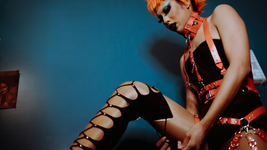Bodies in Boxes: Should Human Remains Be Displayed in Museums?
- Issabella Orlando
- Oct 15, 2019
- 3 min read

Photos via Wikimedia Commons: Mummified hand from the Musée des beaux-arts de Lyon
When I visited the Pompeii exhibition during its temporary feature at the Royal Ontario Museum in Toronto, I remember holding my breath. I wasn’t convinced that I was prepared to see casts of volcanic ash in the shape of human bodies. Even without the presence of human remains, long deteriorated by the passage of time, the display made me uncomfortable; the crouching positions of the figures reminded me of lock-down safety drills I’d done in school. They were so undeniably human, there were people in there who looked like strangers, like friends, like me.
The same might be noted in museums displaying bog bodies, where the waterlogging keeping some flesh remarkably intact, or of mummies with hair still visibly escaping the headwraps. There are little reminders, small details that nudge the viewer to realise that the object of their gawking is not a what but a who. In other instances, such obvious humanity is not always the case. Mummies and skeletons have become Halloween-y caricatures, and in the absence of the rest of their once-human form, they might appear to never have been living at all. Nevertheless, these are the exhibits that visitors flock to the museum for, the ones they cannot wait to see, the ones they will babble about over lunch.

Garden of the Fugitives at Pompeii
There’s something provocative about the gruesome. It’s human nature to spot a car accident and find oneself unable to look away. I believe the same concept applies to the experience of human remains on display in museums. We are simultaneously appalled and engrossed by the humanity of it all. Repelled and attracted once we realise we are looking in a mirror. We will find the same fate inescapable. We are made of the same tissues, the same decomposable flesh that will eventually fall from our bones. So much has changed but so much remains fundamentally the same. This is both comforting and utterly terrifying.
But it is also attractive. It sells tickets. It’s exciting and memorable–I didn’t forget the Pompeii people, did I?–and so the displays remain the most crowded cases in the museum. But as society grows more and more self-aware, considerate and politically correct, questions are being raised about the ethics of displaying human remains. Is it right, to have someone else’s body on show without their consent, let alone for profit? Do the dead have rights to privacy? Of course. Why else close a funeral casket? But we seldom apply the same decency and sensitivity gifted to our deceased family members to foreign strangers who died in another era, on another continent, or in alien circumstances. In some cases, those individuals are the direct relatives of living ancestors, who have sometimes asked for their remains to be returned for burial. But those people came from faraway places and their ancestors’ claims seem to border the spiritual, the supernatural, and thus are more easily dismissed. Their museum exhibits are sometimes maintained in refusal, in other cases returned to graves that were already dug, ready and waiting. Meanwhile, displays of hundred or thousand-year-old human material are often overlooked. Where do we draw the line? When does a body stop being a human?

Head of Thutmose III’s mummy, from Catalogue of the Royal Mummies in the Museum of Cairo.
There is something valuable in the display of these remains which cannot be overlooked. They probe interest and provide context. They serve as reminders that the artefacts displayed alongside them are not just material objects, but carriers of the stories, the evidence, even the DNA of a past society that was made up of people no less human than you or I. Civilisation is not singular. It’s the compilation of generations of people living what, to them, were ordinary lives. We look back on centuries and forget to consider that they’re assemblages of twenty-four-hour days, not a second longer or shorter than our own. Sometimes without a physical body to remind us, the humanity of the past escapes us.
Perhaps the dead should be left buried once and for all, for a number of justifiable ethical, spiritual or personal reasons. Perhaps we draw a hard line here against the display of human remains which we simply agree not to cross. Or perhaps the answer is to continue to visit these displays in museums, but with a greater sense of reverence, with the intention of paying our respects. Maybe continuing to learn from what’s left of a person is the most decent thing to do, to allow them to continue to serve a purpose here on earth even though they’re long gone. Maybe the greater sin is not to make a spectacle of a human being, but to forget them.
Edited by Alexia McDonald, Digital Editor

































